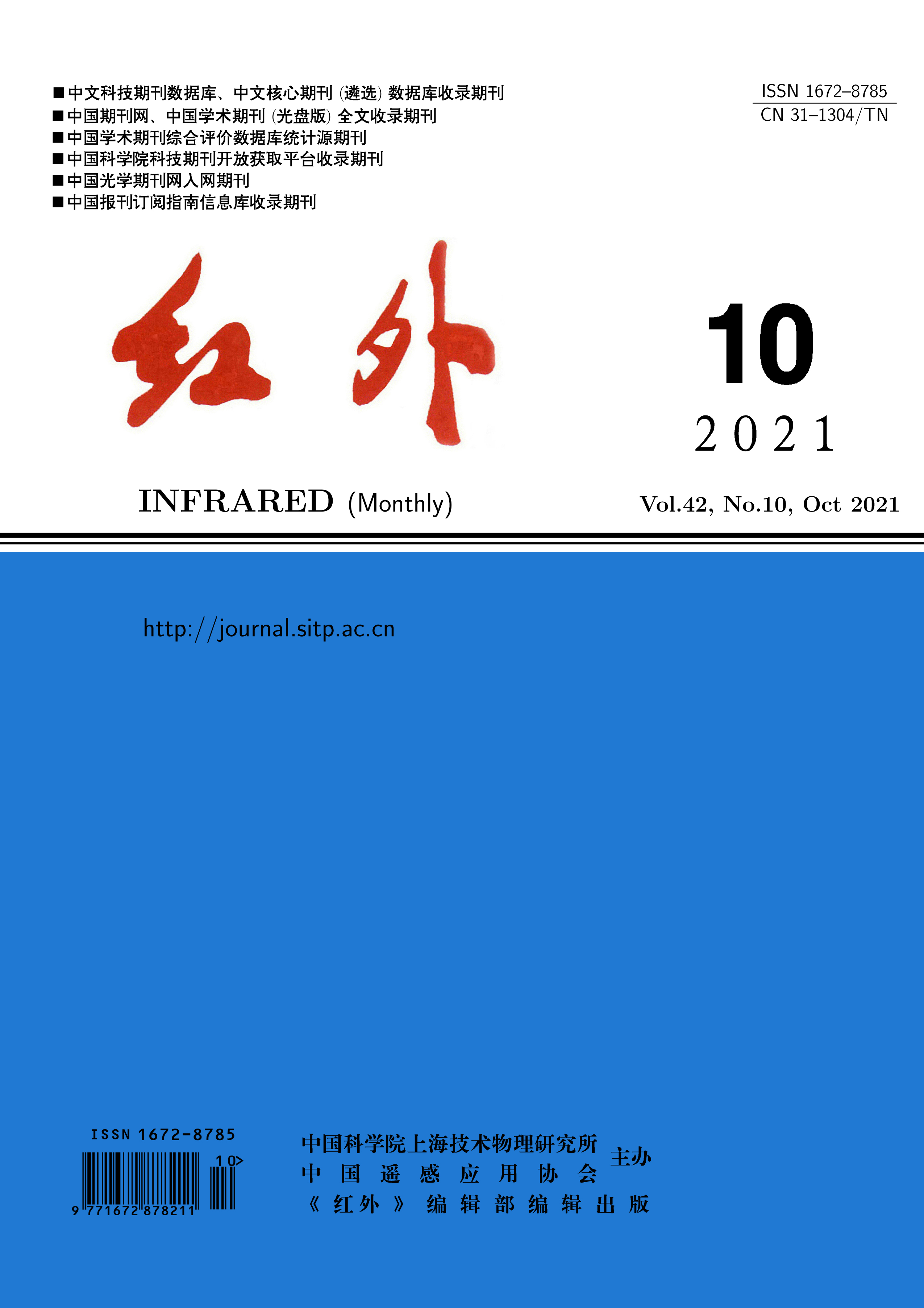
The theoretical model (single-channel and parallel compensation type) and the microphonic noise model of the Pb(In1/2Nb1/2)O3-Pb(Mg1/3Nb2/3)O3-PbTiO3 (PIMNT) pyroelectric infrared detectors with current mode are established and improved. The theoretical model is used for simulation, and a single-channel and two compensated (sensitive element separated and integrated) PIMNT pyroelectric infrared detectors are designed and prepared. The responsivity (RV), noise (un), specific detectivity (D*) and microphonic noise (uvib) of these three detectors are tested and compared. The results show that, compared with the single-channel PIMNT infrared detectors, the detection ability of the compensated infrared detectors is slightly reduced, but the anti-jamming ability has been greatly improved.
In recent years, in order to meet the development needs of a new generation of infrared focal plane detectors with megapixels, high integration and high performance, the demand for InSb wafers with high lattice quality and high surface state is increasing. In order to improve performance of the InSb wafers processed with as-grown crystal, the high temperature heat treatment of the wafer is studied. The inherent defects of crystal growth and the process defects introduced by wafer processing are optimized through using a specially designed wafer loading device combined with the corresponding heat treatment method. The stoichiometric ratio of the InSb wafer is improved, and the residual stress inside the wafer is released. The quality of the crystal lattice is improved, the flatness of the whole wafer is optimized, and the overall quality of the InSb wafer is finally improved, which laid a material foundation for the production of high performance and large size infrared focal plane detectors.
InSb infrared focal plane array (IRFPA) detectors are playing important roles in the medium wave infrared band. But cross-shaped dead pixels severely reduce the performance of the detectors. It was found that indium bumps were invalid in the cross-shaped dead pixels′ regions by focused ion beam technology. Further inspection revealed that the indium bump preparation parameters were not good. Through improving the shape of the indium bumps and increasing the height, the firmness of the welding surface was strengthened, very few InSb detectors had the problem of cross-shaped dead pixels. The optimized InSb infrared detectors were baked at 80 ℃ for 14 days, and the number of cross-shaped dead pixels remained unchanged after testing. The reliability of indium bumps was good. Optimizing indium bump preparation technology can effectively solve the cross-shaped dead pixels problem. Interconnection failure is the main cause of the cross-shaped dead pixels problem. By analogy, this method can solve the cross-shaped dead pixels problem of all InSb infrared detectors.
In order to improve the tactical index of weapon system, it is necessary to realize the rapid cooling of infrared detectors. In this paper, the factors affecting the cooling time of the detectors are listed by analyzing the structure of the detectors. The comparative experiments of cooling time are made separately by reducing the heat capacity of dewar cooling stage, reducing the heat loss, improving the thermal conductivity of the adhesives and adjusting the distance between the nozzle and the cooling stage. By analyzing the experimental results, the following conclusions are drawn: for conical metal dewar, the biggest factor affecting the cooling time is the heat capacity of the cooling stage, and the proportion of the cooling time reduction is close to that of the heat capacity reduction. The second biggest factor is the efficiency of heat exchange between the cooler and the dewar. Improving other factors can also reduce the cooling time of the detectors, but the effect is not significant. The conclusion provides a more direct reference for improving the cooling time of infrared detectors.
With the continuous expansion of the array scale of infrared focal plane detectors, the thermal stress of large array HgCdTe chips becomes worse. The damage is prone to occur after temperature shock, which will directly affect the use of the detectors, and even lead to the failure of the detectors. This has become an urgent problem to be solved in the production process of large array detectors. In this paper, the damage reason of large array HgCdTe chips at low temperature is studied by means of simulation, and the comparison analysis is made with small array detectors. The results show that the stress concentration locates at the edge of indium column and HgCdTe, which is the origin of the damage. The selection of different materials and the design of the structure sizes are helpful to reduce the thermal stress and improve the reliability of large array HgCdTe chips.
Because the content of impurity in HgCdTe thin film materials has a great influence on the performance of infrared detectors, the requirement for the purity of bromide methanol etching solution used in the substrate surface processing is very high. In this paper, an improved sub-boiling distillation device is used in further purification of high purity bromine solution, and the impurity content is further reduced by optimizing the experimental conditions according to the results of ICP--MS, which is beneficial to improve the performance of HgCdTe infrared focal plane detectors.
Different from urban green space planning, forestland construction planning is usually conducted without land expropriation. Due to the limitations of the existing land use pattern in the suburbs and previous regional forestland planning methods, the practicability of the planning is relatively low. In this paper,the key role of the comprehensive analysis method based on high resolution remote sensing data in solving the problem of Shanghai forestland planning and the effect of the actual planning are expounded.










